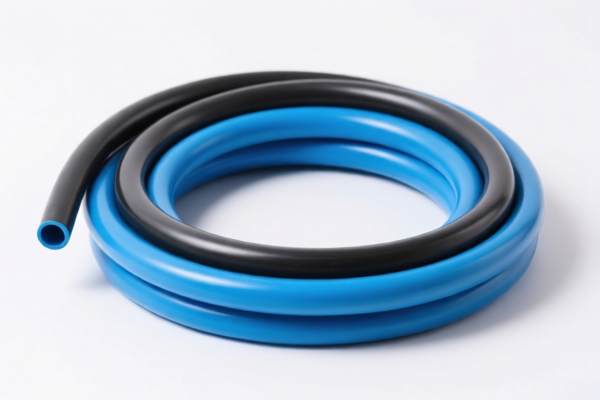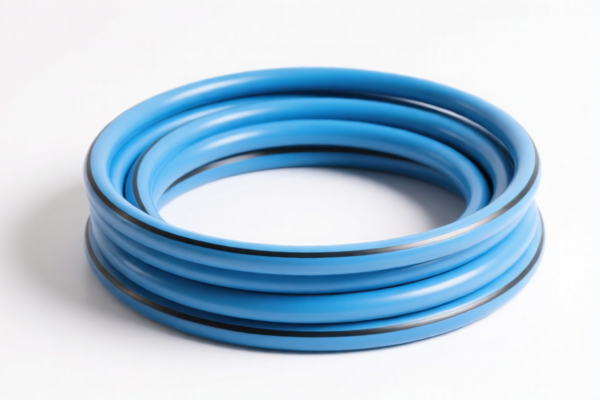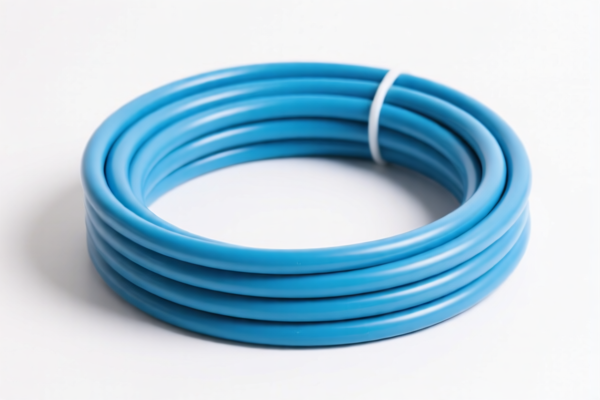| HS Code | Official Doc | Tariff Rate | Origin | Destination | Effective Date |
|---|---|---|---|---|---|
| 3904100000 | Doc | 61.5% | CN | US | 2025-05-12 |
| 3904400000 | Doc | 60.3% | CN | US | 2025-05-12 |
| 3917230000 | Doc | 58.1% | CN | US | 2025-05-12 |
| 3917320010 | Doc | 58.1% | CN | US | 2025-05-12 |




PVC Coil
Polyvinyl chloride (PVC) coil refers to flexible tubing manufactured from polyvinyl chloride compounds. It is a versatile material used across numerous applications due to its combination of properties including durability, flexibility, chemical resistance, and cost-effectiveness.
Material Composition
PVC coil is produced from PVC resin, plasticizers, stabilizers, lubricants, and other additives. The proportion of these components determines the coil's flexibility and specific characteristics.
- PVC Resin: Provides the base polymeric structure.
- Plasticizers: These are crucial for achieving flexibility. Common plasticizers include phthalates (though increasingly replaced by alternatives due to health concerns), adipates, and trimellitates. The type and amount of plasticizer significantly affect the coil’s softness and temperature resistance.
- Stabilizers: Prevent degradation of the PVC during processing and use, particularly from heat and UV exposure.
- Lubricants: Facilitate processing and reduce friction.
Purpose and Function
The primary function of PVC coil is to convey fluids or gases in a flexible manner. It serves as an alternative to rigid piping, offering ease of installation and routing. Key applications leverage its resistance to chemicals, weathering, and abrasion.
Usage Scenarios
- Irrigation: Used extensively in sprinkler systems, garden hoses, and drip irrigation lines.
- Pool and Spa: Employed for water circulation, drainage, and filtration systems.
- Industrial Applications: Handles chemical transfer, pneumatic tubing, and general fluid conveyance in manufacturing plants, laboratories, and construction sites.
- Automotive: Used in vacuum lines, air conditioning lines, and various fluid transfer applications.
- Household: Found in shower hoses, aquarium tubing, and general-purpose water lines.
- Construction: Used for drainage, venting, and water supply lines.
Common Types
PVC coils are categorized based on flexibility, wall thickness, and reinforcement.
- Light-Duty PVC Coil: Typically used for low-pressure applications like garden hoses and light irrigation. Offers good flexibility but limited pressure resistance.
- Medium-Duty PVC Coil: Provides a balance of flexibility and pressure resistance, suitable for pool and spa applications, general water transfer, and some industrial uses.
- Heavy-Duty PVC Coil: Reinforced with a helix wire (usually steel or synthetic fiber) to withstand higher pressures and temperatures. Used in demanding industrial applications, chemical transfer, and high-pressure water lines.
- Clear PVC Coil: Transparent PVC offering visibility of the fluid flowing within. Used for applications where visual inspection is required.
- Reinforced PVC Coil: Incorporates a reinforcing layer (often braided polyester or steel wire) for increased strength and pressure resistance.
- Food Grade PVC Coil: Manufactured with materials that meet specific regulatory standards for contact with potable water or food products.
Properties
- Flexibility: Varies depending on plasticizer content and formulation.
- Chemical Resistance: Resistant to many acids, bases, oils, and solvents.
- Weather Resistance: Resistant to UV degradation and weathering.
- Abrasion Resistance: Moderate abrasion resistance.
- Tensile Strength: Moderate tensile strength, enhanced by reinforcement.
- Temperature Resistance: Generally suitable for temperatures between -20°F to 140°F (-29°C to 60°C), although this varies with formulation.
- Cost-Effectiveness: Relatively inexpensive compared to other flexible tubing materials.
Considerations
- Plasticizer Migration: Plasticizers can leach out over time, reducing flexibility and potentially contaminating the fluid being conveyed.
- Environmental Concerns: PVC production and disposal can have environmental impacts. Recycling and alternative plasticizers are being developed to address these concerns.
- Compatibility: Ensure compatibility between the PVC coil and the fluid being conveyed to prevent degradation or contamination.
PVC coil, typically used in various applications like water pipes, flooring, and industrial applications, falls under several potential classifications depending on its specific form and composition.
Here are the relevant HS codes based on the provided reference material:
- 3904100000: Polymers of vinyl chloride or of other halogenated olefins, in primary forms: Poly(vinyl chloride), not mixed with any other substances. This code applies to PVC resin in its basic, uncompounded form. It is the raw material for many PVC products. The tax rate is 6.5% base tariff, 25.0% additional tariff, and 30.0% additional tariff after April 2, 2025, resulting in a total tax rate of 61.5%.
- 3904400000: Polymers of vinyl chloride or of other halogenated olefins, in primary forms: Other vinyl chloride copolymers. This code covers PVC copolymers, meaning PVC mixed with other substances. The tax rate is 5.3% base tariff, 25.0% additional tariff, and 30.0% additional tariff after April 2, 2025, resulting in a total tax rate of 60.3%.
- 3917230000: Tubes, pipes and hoses and fittings therefor (for example, joints, elbows, flanges), of plastics: Tubes, pipes and hoses, rigid: Of polymers of vinyl chloride. This code applies to rigid PVC pipes and tubes. The tax rate is 3.1% base tariff, 25.0% additional tariff, and 30.0% additional tariff after April 2, 2025, resulting in a total tax rate of 58.1%.
- 3917320010: Tubes, pipes and hoses and fittings therefor (for example, joints, elbows, flanges), of plastics: Other tubes, pipes and hoses: Flexible tubes, pipes and hoses, not reinforced or otherwise combined with other materials, without fittings Of polyvinyl chloride. This code applies to flexible, non-reinforced PVC tubes and hoses. The tax rate is 3.1% base tariff, 25.0% additional tariff, and 30.0% additional tariff after April 2, 2025, resulting in a total tax rate of 58.1%.
It is important to determine whether the PVC coil is in its primary form (resin) or a finished product (tube, pipe, or hose) to select the correct HS code. If the coil is a copolymer, 3904400000 would be appropriate. If it is a rigid tube or pipe, 3917230000 applies. If it is a flexible tube or hose, 3917320010 applies.
Customer Reviews
No reviews yet.